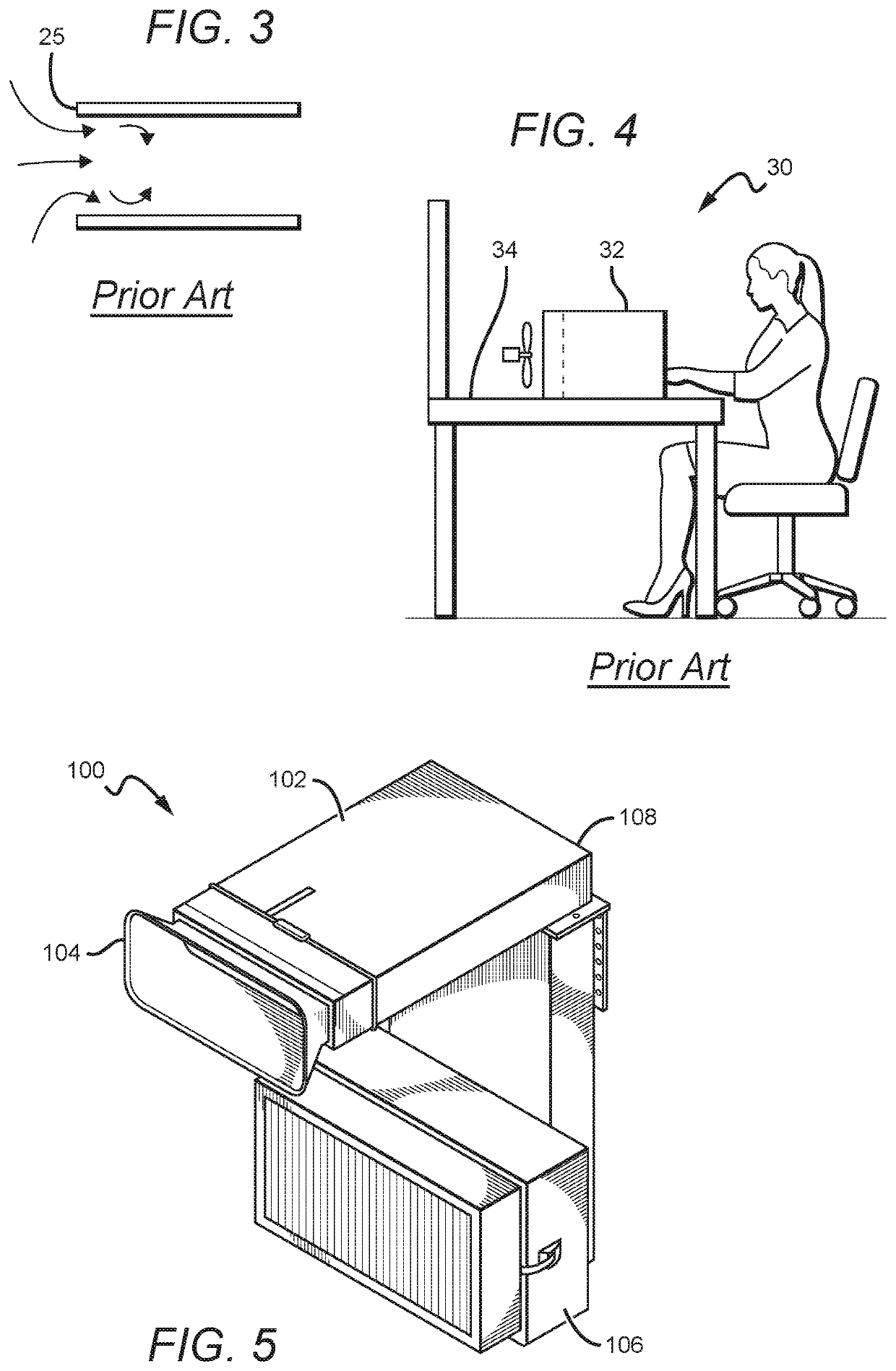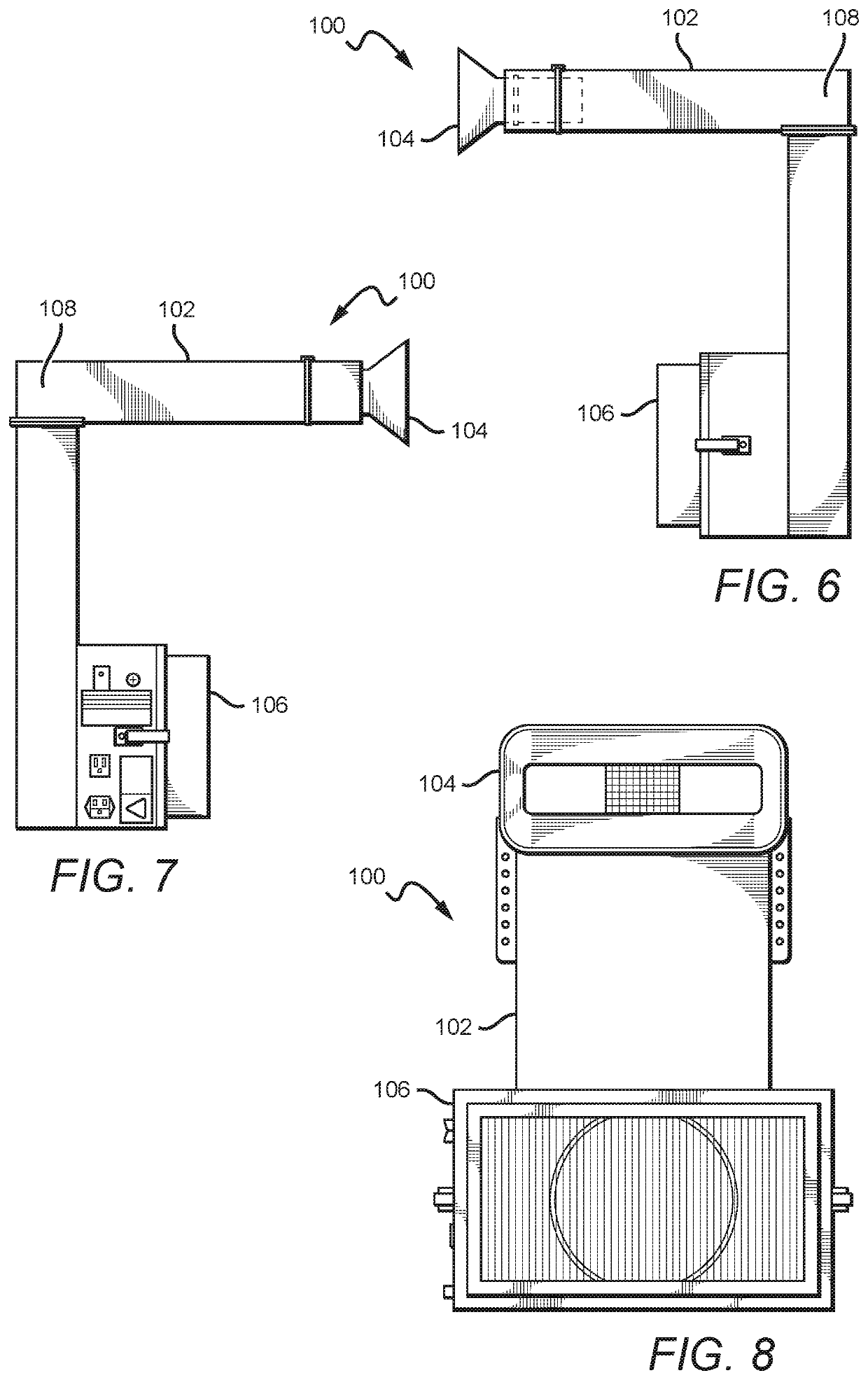Cleanroom workstation particle capture system
a technology of particle capture and workstation, which is applied in the field of system for the capture of particles, can solve the problems of dangerous blown off cycle of contaminants, insufficient system, and particle finding their way back onto the product, and achieve the effect of no blowback and high efficiency
- Summary
- Abstract
- Description
- Claims
- Application Information
AI Technical Summary
Problems solved by technology
Method used
Image
Examples
Embodiment Construction
[0038]The present invention is directed to various embodiments of particle capture systems and also to workstations that utilize the particle capture systems. The systems can be used for many different applications, but are particularly applicable to cleanrooms and workstations for critical components or work pieces, such as implantable medical devices. For these critical components it is necessary to have an effective and reliable particle capture system for the removal of particles. The particles are typically blown off of the components and the particle capture systems according to the present invention efficiently capture the particles so that they are removed from the surrounding cleanroom environment and do not return to the component.
[0039]Particle capture systems according to the present invention can be arranged to convey and capture particulate debris at a filter. As described above, some embodiments comprise five major components including an ionized air gun, an inlet con...
PUM
| Property | Measurement | Unit |
|---|---|---|
| diameter | aaaaa | aaaaa |
| diameter | aaaaa | aaaaa |
| angle | aaaaa | aaaaa |
Abstract
Description
Claims
Application Information
 Login to View More
Login to View More - R&D
- Intellectual Property
- Life Sciences
- Materials
- Tech Scout
- Unparalleled Data Quality
- Higher Quality Content
- 60% Fewer Hallucinations
Browse by: Latest US Patents, China's latest patents, Technical Efficacy Thesaurus, Application Domain, Technology Topic, Popular Technical Reports.
© 2025 PatSnap. All rights reserved.Legal|Privacy policy|Modern Slavery Act Transparency Statement|Sitemap|About US| Contact US: help@patsnap.com



